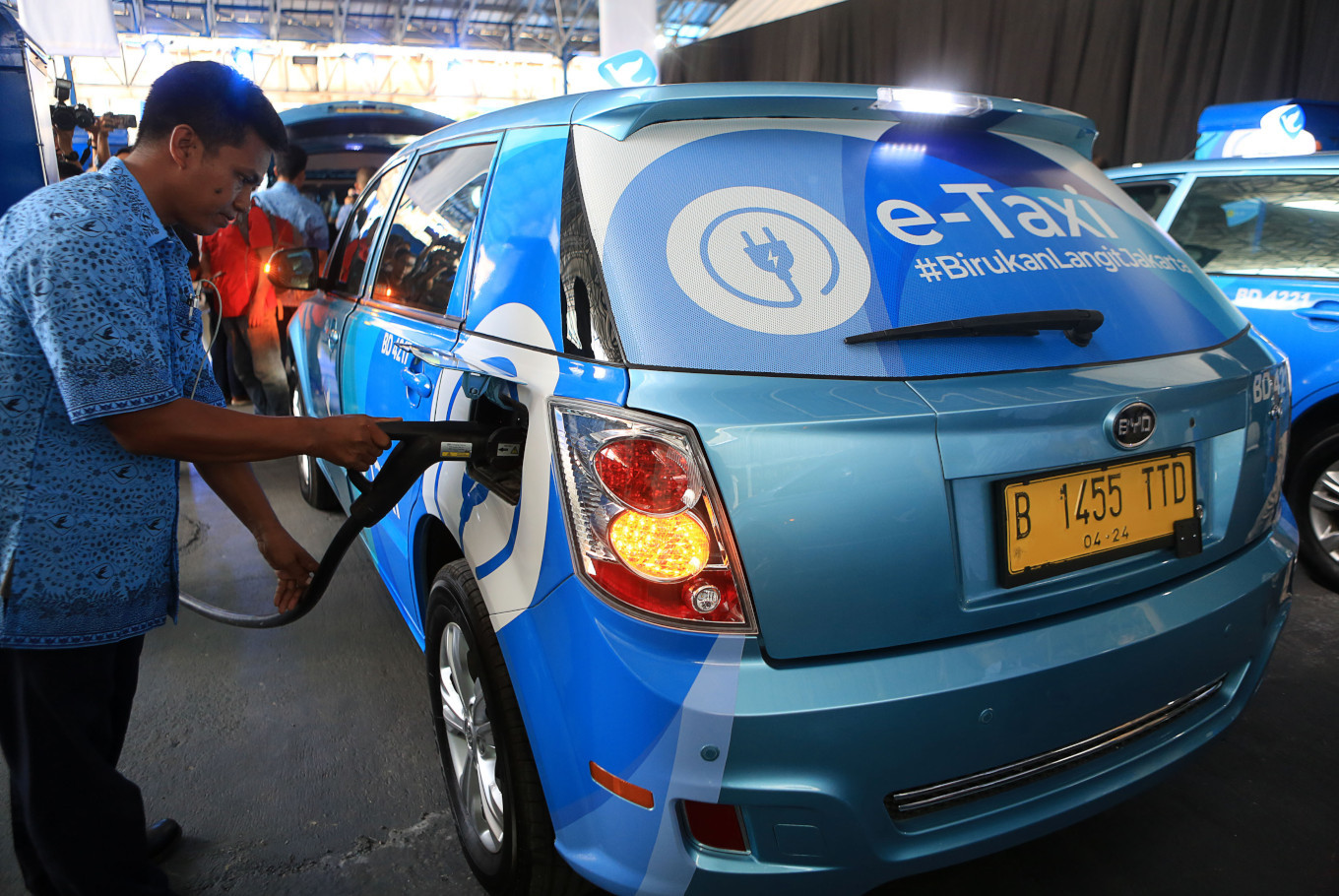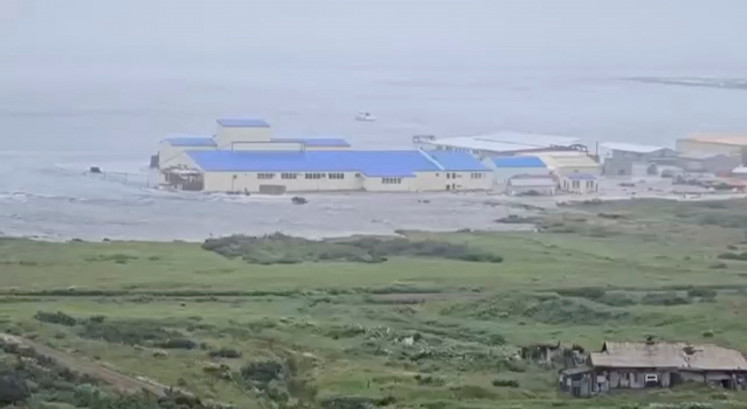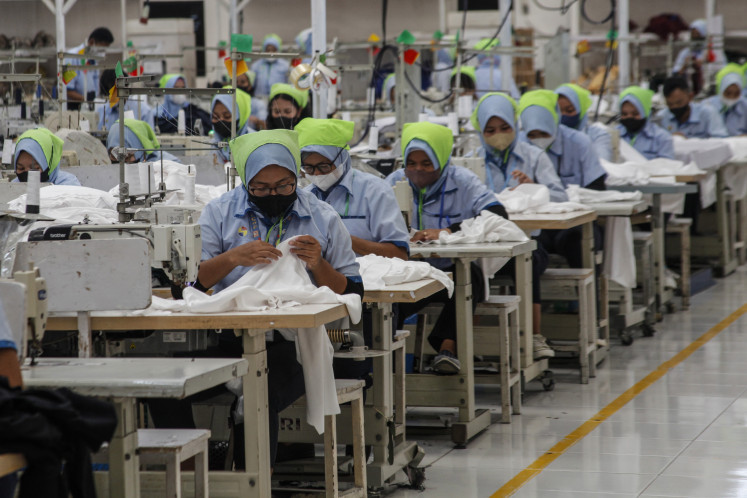Popular Reads
Top Results
Can't find what you're looking for?
View all search resultsPopular Reads
Top Results
Can't find what you're looking for?
View all search resultsIndonesia as a greener battery producer for electric vehicles
Despite its abundant resources, the nickel industry should have paid more attention to sustainability issues if Indonesia wants to lead global EV production.
Change text size
Gift Premium Articles
to Anyone
T
he transportation sector is one of the most significant contributors to global greenhouse gas (GHG) emissions. This sector remains the biggest emitter and air polluter in Southeast Asia, contributing to 25 percent of total GHG emissions. Meanwhile, following the Paris Agreement in 2015, ASEAN member states have committed to reducing global GHG emissions as soon as possible and reaching climate neutrality by mid-century.
To do so, the International Energy Agency (IEA) recommends that at least 60 percent of the global road fleet run on electric vehicles (EV) by 2030. As of 2019, one-fifth of the world's road vehicles are in ASEAN, according to our estimate.
EVs are similar in many aspects to conventional transportation that is powered by internal combustion engines, but they are much more energy-efficient and emit zero emissions. The latter proposition, though, needs to be further examined. Indonesia, which has a 60 percent share of total road vehicles in ASEAN, will be the perfect case.
In 2019, President Joko "Jokowi" Widodo issued Presidential Decree No. 55/2019 as the framework for accelerating battery-powered EV deployment. Following this, the Energy and Mineral Resources Ministry launched a road map of EV infrastructure development. The road map includes various supporting factors for the EV ecosystem such as the number of charging stations, electrification of government vehicles and e-mobility. Further, Industry Ministerial Regulation No. 27/2020 stipulates the minimum domestic content of EVs manufactured in Indonesia. This regulation provides a strong foundation for the national industry to become the leading manufacturer of EVs and their components.
The policies above indicate that Indonesia believes in the significant potential of EVs in reducing carbon emissions. The EV industry itself, however, should not forget to foresee the sustainability aspects of electric mobility. From that perspective, the “zero-emissions” tag of EVs should also consider the carbon emissions from the whole lifecycle of EVs, including electricity generation, the manufacturing of components and management of components in their end-of-life.
Starting from electricity generation, Indonesia has set a target of increasing the share of renewable energy in its energy system, including electricity generation, albeit with apparent challenges in implementation. It is reassuring that several studies that made a comprehensive comparison between various mobility options through well-to-wheel assessment found that EVs are still competitive. Meaning that in terms of overall emission, EVs are still better than the conventional option, even in regions with a large coal share in electricity generation.
With the outlook of the Indonesian EV market being seemingly positive, the government must ensure a continuous supply of raw materials of EV lithium-ion batteries – nickel, cobalt and copper. According to the Investment Ministry, Indonesia has 30 percent of the world’s nickel reserves of 21 million tons, mainly located on the islands of Sulawesi and Halmahera. Securing supply is an essential strategy to mitigate supply shortage problems, which might lead to uncontrollable price hikes.
Noting this, Indonesia is set on building its first EV battery plant to start production by 2023. The project was initiated by the establishment of the Indonesia Battery Corp, a holding company made up of four state-owned enterprises (SOE), namely MIND-ID, Antam, Pertamina and PLN. South Korea’s LG Group also joined as a consortium member with an initial investment of US$1.2 billion.
The project aims to develop domestic EV batteries equivalent to 8 to 10-gigawatt hours’ worth of electricity generation annually for the next four years.
In line with the manufacturing ambition, Indonesia aims to operate 23 smelters by 2021, 16 are designated for nickel. The mining of such a mineral, though, has an emission footprint of its own.
Pollution in lakes and drinking water sources, damage to coral reefs, deforestation, impact on riverine fisheries and frequent flooding are the potential side effects of the nickel mining business in Indonesia. Nickel production is energy-intensive; the ore has a high moisture content that must be dried out and then melted down at 1,500 degrees Celsius, which requires vast amounts of energy. Currently, the required energy comes from coal-fired smelters, which have a high carbon footprint.
Despite its abundant resources, the nickel industry should have paid more attention to sustainability issues if Indonesia wants to lead global EV production. One solution is to move away from coal to greener options such as biomass as a source of energy. This will make Indonesia a more sustainable nickel producer and open the path to securing significant contracts from foreign EV makers and investors who have already applied higher environmental, social and governance (ESG) standards.
The battery packs used in EVs are chargeable, similar to those used in cell phones and laptops, only larger. However, such batteries have a limited lifetime, eight to 15 years, before they need to be replaced. Once they expire, they must be discarded. If not handled properly, the e-waste can pollute and harm the environment. The idea of the circular economy may play its role here.
Indonesia sees this potential issue as an opportunity. Hence, it has planned a facility for waste management.
The government set up PT Nasional Hijau Lestari under MIND ID and encouraged the participation of the private sector to be integrated with the EV battery manufacturing plant above. Through the 35 percent import substitution program, the Industry Ministry encourages private businesses to increase the added value of waste processing through the recycling industry, especially in the EV battery industry.
A few things need to be considered in this recycling business. First is the standard compliance on new batteries, second is the utilization of more advanced methods and technology. They are crucial to increase efficiency and reduce the carbon footprint of the recycling process. Lastly, recycling centers in strategic places could have a massive impact on reducing the high cost of transporting combustible batteries. This will help reduce costs, but it is easily accessible for people to recycle their batteries.
The potential of the EV industry is huge in Indonesia. Frankly, EVs are inevitable and essential to protect the environment from excessive emissions. However, this zero-emissions future will not emerge without comprehensive solutions across a lifetime of energy use. This means greening up the grid and reducing carbon emissions from mining, manufacturing and waste disposal.
Collaboration between the government, SOEs and the private sector is needed to build a more sustainable supporting ecosystem for the domestic industry to compete globally.
***
The writers are affiliated with the ASEAN Energy Centre, where Monika Merdekawati is a sustainable energy, renewable energy and energy efficiency officer, Jeihan Kartika Hapsari is an intern for ASEAN Climate Change & Renewable Energy Project and Zulfikar Yurnaidi is a senior officer of sustainable energy, renewable energy and energy efficiency. The views expressed are their own.










